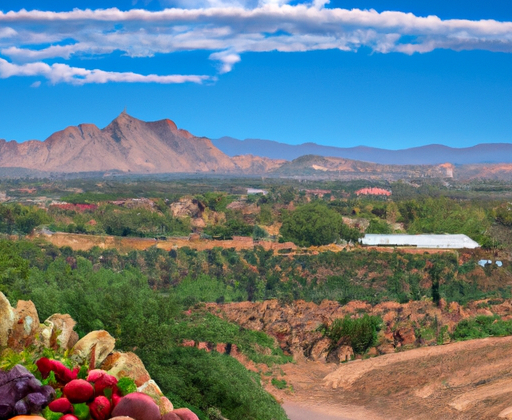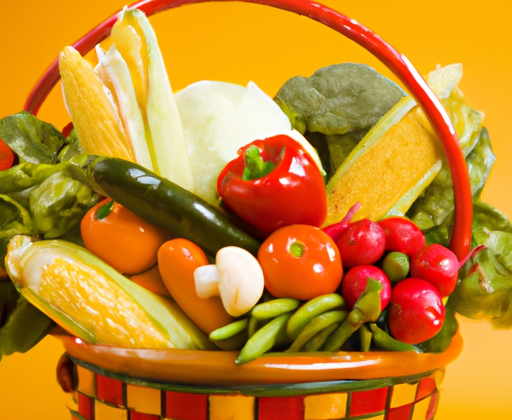Introduction
What do you think of when you hear the words “food and water scarcity”? Chances are, it’s a scary thought. But unfortunately, this is an issue that affects millions of people all over the world. Food and water scarcity are two of the biggest global challenges we face today, with far-reaching implications.
Food and water scarcity has many causes and effects that lead to serious complications, ranging from malnutrition to political unrest. It’s a complex problem that can’t be solved overnight. However, there are steps we can take to address these global challenges and help those in need.
Causes of Food and Water Scarcity
Food and water scarcity is a problem that plagues much of the world, and it’s only getting worse. So what are the root causes? Population growth, poor agricultural practices, climate change and mismanagement of resources are all contributing to the issue.
Population growth has obviously had an effect on our planet’s ability to meet the needs of people, animals and plants. But as our population has grown, so has the need for agricultural goods, leading to unsustainable farming methods and over-harvesting of wild species.
Climate change is contributing to the global food and water crisis, too. Unusual weather patterns, droughts and floods have caused crops to fail, putting stress on already limited resources. And when natural disasters hit, most of the time it’s the poorest communities that suffer the most.

Finally, we can’t ignore the role of human mismanagement of resources. Poor regulations, unchecked development, and ignorance have caused water tables to fall, land to be destroyed and rivers to become polluted. All of this adds up to a scarcity of resources that leads to even more problems.
Effects of Food and Water Scarcity
Ah, food and water scarcity. It affects so many and has such a profound effect on the lives of countless people around the world. From malnutrition and poverty to water-borne diseases and political unrest.
What are the effects of food and water scarcity? Well, first off, it can lead to serious malnourishment in those who are deprived of sufficient access to healthy foods or clean, safe drinking water. Malnutrition weakens the immune system and often leads to stunted physical and mental growth, both of which can have a lasting negative impact on an afflicted person’s life.
Water-borne diseases such as cholera, typhoid, and dysentery are also common among places suffering from lack of clean water resources. These diseases can be difficult to treat, sometimes with fatal results, especially if proper medical care is not available.
Food and water scarcity can also result in extreme poverty, especially in rural areas, leading to limited access to education, healthcare, and economic opportunities. People living in poverty are often unable to secure basic necessities, let alone save for a better future.
Finally, without enough food or water, people become desperate and dissatisfied with their governments, thereby pushing them towards large-scale social unrest. This has been seen time and time again throughout history, as people become frustrated with their leaders’ inability to adequately address their needs.
Solutions for Addressing Global Challenges
To combat global food and water scarcity, we’ll need to get creative. Here are a few suggestions:
For starters, improving agricultural methods could go a long way in alleviating the situation. That means investing in better technology like drip irrigation systems, as well as embracing traditional techniques of sustainable farming that don’t deplete the land.
We should also be sure to conserve natural resources as much as possible. This means using less water and energy, reducing our carbon emissions, and cleaning up pollution–which will help us all breathe a bit easier.
In addition, expanding access to clean, safe water is a must. It’s about creating sustainable water systems, building wells, and connecting entire communities with access to this precious resource.
Finally, it’s important to ensure people everywhere have the knowledge and education they need to make smart dietary choices. We need to spread awareness about the importance of nutrition, proper food storage and preservation, and secure sources of food.
Conclusion
It’s clear that food and water scarcity is a critical global challenge we must tackle, and it won’t be easy. Our population has exploded and climate change has robbed us of some of our most precious resources, but we can make meaningful changes that will help address these challenges. Improved agricultural practices, conservation of natural resources and expanding access to clean water will all help, as would greater education on nutrition. Of course, all of this requires a concerted effort from governments, businesses and citizens. We have the power to make a real difference, so let’s get cracking!
World Hunger FAQ
How water scarcity is a global problem?
Water scarcity is a global problem, and it’s something we need to address now. It’s estimated that around two-thirds of the world’s population will face water scarcity by 2025. That’s a frightening prospect. What’s worse is the fact that this problem is severely affecting some of the world’s poorest countries, making it even harder for them to escape poverty.
The effects of water scarcity can be both immediate and long-lasting. In the short term, it can lead to food shortages and an inability to access clean water. In the long run, it can result in widespread health issues and damage to vital ecosystems.
We need to start thinking more creatively and coming up with solutions to this problem fast. One potential solution is to look into desalination. Desalination has the potential to provide a reliable and renewable source of water to those in need. However, the process is incredibly expensive, so we need to look into other solutions that are more economical and provide greater access to water.
Another solution is to focus on conservation. This means reducing water wastage and ensuring that water is used efficiently in order to maximize the benefits. It also means developing infrastructure that can store and transport water more effectively.
The challenge of water scarcity is a very real one, and it’s up to us to find a way to protect our planet and ensure that everyone has access to a clean and plentiful supply of water. We must act now if we want a future for ourselves and for generations to come.
Why is food and water a problem in the world?
I’m sure you’ve heard about the global challenge of food and water scarcity. It’s a big problem for many people around the world, but why does it happen? Well, it all boils down to resources. All too often, there’s simply not enough food or clean water for everyone, making it difficult for some to secure their basic needs. But that’s not the only issue – in some countries, the resources exist, but the government’s policies mean that they aren’t distributed fairly or efficiently, leading to further food and water shortages.
One other major factor is climate change. The severity of droughts and floods across the world has been increasing as temperatures rise, making it harder to grow crops and access clean water. This has been particularly devastating in developing countries, where large portions of the population survive on subsistence agriculture.
So, what can be done? Well, there are a few different answers. First, governments should work to ensure equitable access to resources. This means implementing policies that ensure the food and water are fairly and evenly distributed. Additionally, nations should be investing in resilient infrastructure in order to mitigate the effects of climate change. This could include building dams and irrigation systems, as well as investing in drought-resistant crops.
At the end of the day, the challenge of food and water scarcity is a complex one. But with the right policies, investments and actions, it’s an issue we can work to understand and solve.
What are the challenges of water scarcity?
I’m seeing an
all-too-familiar pattern when it comes to water scarcity – a pattern that’s not going away anytime soon.
One of the main challenges is a lack of access to adequate and clean water for drinking, cooking, and sanitation.
People in certain parts of the world, especially in rural and developing areas, are particularly impacted since they don’t have the resources to build the infrastructure needed to access the water they need.
In addition, climate change is exacerbating water scarcity in many places by causing fluctuations in weather patterns, reducing water supplies, and increasing the risk of drought.
And let’s not forget the fact that groundwater is being depleted at an alarming rate, due to over-exploitation and inefficient irrigation systems.
The bottom line is this: Water scarcity is a real problem that requires immediate attention.
Governments, corporations, and individuals all have a role to play in reducing water scarcity and ensuring that everyone has access to clean, safe water.

